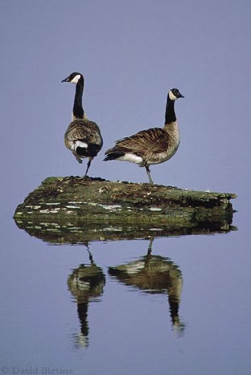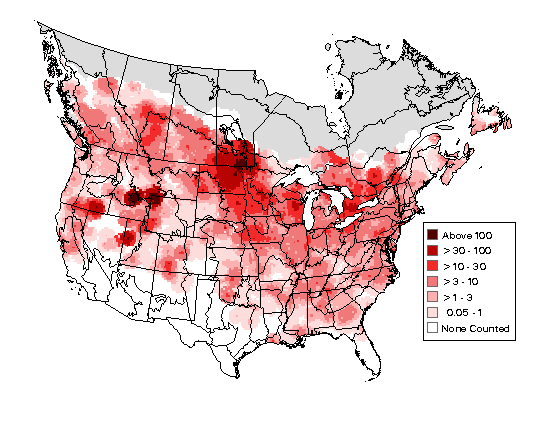Canada Goose

Canada Goose Information
Length: 25 - 45"
Habitat:
Breeding habitat: Freshwater marshes, saltwater marshes, swamps, sloughs, ponds, lakes, rivers.
Winter habitat: Coastal bays and estuaries, lakes with areas of ice-free water, wet fields, agricultural croplands.
Diet: Submerged aquatic vegetation;shoots and stems of sedges, grasses,
and other aquatic plants; seeds and cultivated grains; some insects, berries, crustaceans, mollusks.
Additional Information
Canada GooseDescription, distribution, behavior, diet, reproduction, predators, lifespan, and conservation status. Includes photos and range map. (From Wikipedia)
Canada Goose
Identification Tips
- Sexes similar
- Large long-necked goose
- Black bill
- Black head and neck
- White throat patch extends up to cheek
- Brown back, upper wing and flanks
- Brownish-white breast and belly
- White upper tail coverts contrast with black tail
- White undertail coverts
- Great size variation, with some northern subspecies duck-sized
- Immature similar to adult
(Credit: U. S. Geological Survey)
Breeding Bird Survey Map,
2011-2015

(Image credit: USGS)
Range in New England
The Canada Goose breeds throughout New England.
In the winter, they are found in the states of Massachusetts, Connecticut, and Rhode Island, as well as southern Vermont, southern New Hampshire, and coastal Maine. They are also found in the rest of northern New England during the winter, although less abundantly.
Some Canada Geese seen in New England during the fall are migrating from far northern Canada and Alaska to their wintering grounds in the southern United States and northern Mexico.
Winter Map from eBird
Sightings of Canada Goose Nov-Mar (1900-present)
Christmas Bird Count Map
Historical CBC Map from USGS